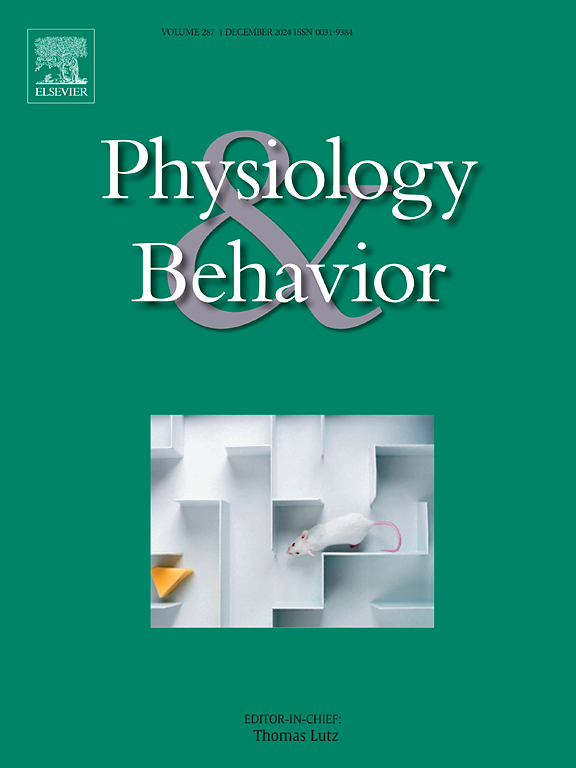Effects of electroacupuncture per-conditioning at Huantiao on motor function recovery in acute cerebral ischemia mice
IF 2.4
3区 医学
Q2 BEHAVIORAL SCIENCES
引用次数: 0
Abstract
Background
Continuous electroacupuncture pre-conditioning (EPRC) and post-conditioning (EPOC) effectively improve motor dysfunction after acute cerebral ischemia, but they require multiple treatments. Recently, electroacupuncture per-conditioning (EPEC) has demonstrated neuroprotective effects, indicating that this single-session intervention has short-term efficacy.
Objective
To evaluate the effect of EPEC at Huantiao (GB30) on motor recovery in acute cerebral ischemia mice.
Methods
Forty-eight male C57 BL/6 mice were divided into three groups: Sham(n = 12), Middle Cerebral Artery Occlusion Reperfusion, MCAO/R (n = 18), and Electroacupuncture, EA (n = 18). The EA group received 60 minutes of electroacupuncture during the ischemic phase. Cerebral blood flow was measured with a laser system, and neurological assessments, brain infarct volume, and neuronal damage were made at 24-, 48-, and 72-hours post-surgery. Motor recovery was tested on day 6, and inflammatory cytokines were measured on day 7.
Results
EPEC at Huantiao (GB30) significantly improves motor function recovery in acute cerebral ischemia mice(p < 0.05), Significantly reducing cerebral infarct volume(p < 0.05) and mitigating neuronal damage and apoptosis(p < 0.05). It also promotes the restoration of cerebral blood flow during ischemia and regulates gradual restoration of cerebral blood flow in early reperfusion(p < 0.05), potentially reducing reperfusion injury. Additionally, it decreases pro-inflammatory factors such as IL-2, IL-8, and IFN-γ(p < 0.05).
Conclusion
EPEC at Huantiao (GB30) significantly improves motor recovery in acute cerebral ischemia mice by reducing infarct size, lessening neuronal damage and apoptosis, increasing cerebral blood flow during ischemia, regulating gradual restoration of cerebral blood flow in early reperfusion, decreasing pro-inflammatory factors, and alleviating reperfusion injury.

电针环跳预处理对急性脑缺血小鼠运动功能恢复的影响。
背景:持续电针预处理(EPRC)和后适应(EPOC)可有效改善急性脑缺血后的运动功能障碍,但需要多次治疗。最近,电针预调节(EPEC)已显示出神经保护作用,表明这种单次干预具有短期疗效。目的:探讨环条EPEC (GB30)对急性脑缺血小鼠运动恢复的影响。方法:雄性C57 BL/6小鼠48只,随机分为假手术组(n=12)、大脑中动脉闭塞再灌注组(n=18)、电针组(n=18)。EA组在缺血期进行60分钟的电针治疗。用激光系统测量脑血流量,并在术后24、48和72小时进行神经学评估、脑梗死体积和神经元损伤。第6天检测运动恢复,第7天检测炎症因子。结果:环条EPEC (GB30)可显著改善急性脑缺血小鼠的运动功能恢复(p结论:环条EPEC (GB30)可通过减小梗死面积、减轻神经元损伤和细胞凋亡、增加缺血时脑血流量、调节早期再灌注时脑血流量的逐渐恢复、降低促炎因子、减轻再灌注损伤等方式显著改善急性脑缺血小鼠的运动功能恢复。
本文章由计算机程序翻译,如有差异,请以英文原文为准。
求助全文
约1分钟内获得全文
求助全文
来源期刊

Physiology & Behavior
医学-行为科学
CiteScore
5.70
自引率
3.40%
发文量
274
审稿时长
47 days
期刊介绍:
Physiology & Behavior is aimed at the causal physiological mechanisms of behavior and its modulation by environmental factors. The journal invites original reports in the broad area of behavioral and cognitive neuroscience, in which at least one variable is physiological and the primary emphasis and theoretical context are behavioral. The range of subjects includes behavioral neuroendocrinology, psychoneuroimmunology, learning and memory, ingestion, social behavior, and studies related to the mechanisms of psychopathology. Contemporary reviews and theoretical articles are welcomed and the Editors invite such proposals from interested authors.
 求助内容:
求助内容: 应助结果提醒方式:
应助结果提醒方式:


